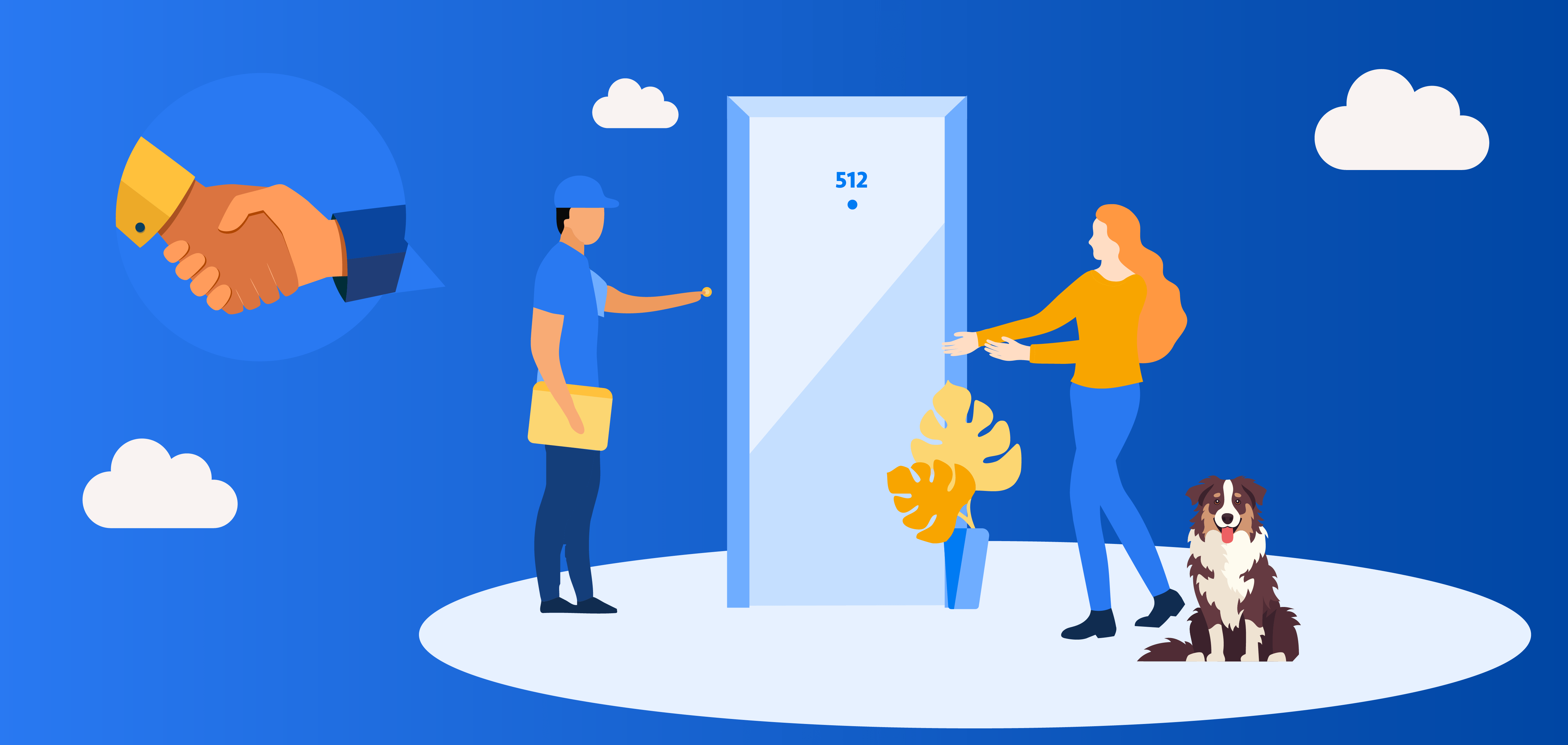Outside and Inside Sales: What’s the Difference?


Tim Edwards
This post was originally published in January 2019 and has been updated for accuracy and comprehensiveness.
Historically, when people hear the word “sales,” they think of experiences associated with pushy and unwanted interactions. These face-to-face sales conversations are known as outside sales, while inside sales are done digitally through efforts like phone calls, emails, and voicemails. Many factors distinguish outside and inside sales models.
Because consumers have historically viewed outside sales as an unwanted experience, salespeople are now taking a much more customer-centric approach. As the traditional model, outside sales remains key to closing large deals with important enterprise customers.
However, the rise of inside sales is not to be underestimated. With more automation tools, the sales process has become streamlined for both buyers and sellers. Inside sales now take up a significant portion of sales teams, with continued growth in popularity.
Continue reading to learn more about the differences between the outside and inside sales models and which one will work best for your business.

Download the Ultimate B2B Appointment Setting Guide
Learn what it takes to identify prospects, get in touch with decision-makers, and set more meetings for your sales reps.
Two different sales models: explained
While both sales models have their unique strengths, it’s important to fully understand their differences to determine which model will help your business the most. The types of sales, the products or services being offered, and your target buyers will affect which sales model you should focus your efforts on.
Outside sales model
The outside sales model involves salespeople traveling to clients or industry events to build relationships and pitch their offerings in person. This model has often been associated with negative connotations, with images coming to mind of a pushy door-to-door salesperson trying to sell you something you don’t need. However, as the traditional model, there are good reasons why it has been kept around for so long.
Outside sales reps can use face-to-face interactions to their advantage by traveling to prospects to pitch their sale in person and start building rapport. Before inside sales came to be, outside sales reps brought in substantial revenue and worked with larger target accounts, closing important deals for their companies.

While the inside sales model is growing in popularity, outside sales reps are still successfully closing important deals with enterprise accounts. HubSpot reports that outside sales reps close 130.2% larger deals than inside sales teams. This is because outside sales reps can leverage their ability to meet in person with prospects to form long-lasting, mutually beneficial business relationships.
This selling structure allows outside sales reps to work with deals at larger organizations that have high value, longer sales cycles, and involve more decision-makers. With all of this being said, it’s important to note that outside reps are now spending 89% more time selling remotely compared to 2013. This shows that the adoption of remote selling has dramatically increased over the last few years.
Inside sales model
The inside sales model requires salespeople to engage with leads and prospects remotely via phone calls, emails, and virtual meetings to close deals. As we have seen in other areas of life, the growth in popularity of the inside sales model stems from technological advancements. With new tools like CRM and video conferencing, salespeople can sell remotely with a streamlined and automated process.

With the new ability to prioritize and communicate with prospects digitally, inside sales reps have shown increased productivity. They make more calls, leave more voicemails, send more emails, and make crucial cadence touches to nurture sales prospects down the sales funnel. Effective for small and medium business deals, inside sales reps have been able to increase their efficiency compared to outside sales reps, reaching their quotas by 9.8% more than outside sales reps.
An effective inside sales team relies on a strong team structure and specialization. An example of a team structure includes an inside sales team paired with a specialized sales development team whose main focus is qualifying leads and setting sales appointments. This allows inside sales reps to focus on closing deals rather than finding prospects.
A big reason companies continue to implement inside sales efforts is consumers’ changing expectations of digital sales experiences. In fact, 64% of buyers in a survey done by Gartner said they prefer a 100% digital buying experience. Advances in communication technology, automation, and machine learning allow for digitized buying experiences and will continue to push remote selling forward.

Subscribe to EBQ's Bimonthly Newsletter

Subscribe to EBQ's Bimonthly Newsletter
Comparing inside sales to outside sales
When we look at the differences between the two sales models, we can see the reasons that inside sales have increased in popularity. That’s not to say inside sales is the way to go for your business. When considering which model will work best for you, ask yourself these questions.
What is the overall cost?
Both sales models require some cost; however, what you are paying for is different. The outside sales model will require expenses for transportation, gas, air travel, dining, and product demo equipment. This may add up, and remember that outside salespeople tend to earn more than their inside sales colleagues.
On the other hand, inside sales require expenses in order to close deals remotely. These may be CRM platforms, phone applications, software subscriptions, and hardware. All of this will allow inside sales reps to optimize their selling process to make more sales.
Should the sales efforts work toward fostering relationships or quickly scaling the business?
A big part of outside sales reps’ jobs is creating trusting business relationships through face-to-face interactions. However, there is only so much a sales rep can do on foot. The inside sales model allows reps to sell remotely and nurture multiple relationships at once with tools like automation. This will allow them to scale their efforts as the company grows.
These factors are not better or worse than the other; it simply depends on the business’s goals and how the sales efforts should be tailored to achieve them.
Which model will enhance efficiency to help reach business goals?
Every sales cycle differs depending on the product or service being offered and the buyer’s process. However, inside sales reps can integrate established and systematic sales processes to improve the efficiency of each sales cycle.
With access to processes like a lead scoring system, inside sales teams can prioritize prospects and save time on leads who are not ready to buy. Without these tools, outside sales reps may spend too much time on prospects who don’t end up buying, wasting time and effort that could’ve been used for prospects who are ready to make a purchase.
The growth of remote selling
Remote selling refers to using technology to connect with leads, prospects, and clients remotely, using elements of inside sales to close deals, maintain engagement with clients, and offer increased flexibility in the workplace.
The growing popularity of inside sales has opened many avenues for new ways to optimize the selling process. Through automation and specialization, inside sales reps are able to shorten the sales cycle. To further simplify the sales process, adding a Sales Development Representative (SDR) will help shorten the complex sales cycles for your inside sales reps.
A Sales Development Specialist is an entry-level representative who cold-calls from a targeted database and warms up inbound leads to qualify prospects.
SDR helps your inside sales reps close more deals by:
- Setting sales appointments
- Determining if the lead aligns with the company’s offerings
- Handing off the warm lead to the inside sales rep to close the deal
The goal of an SDR is to help your inside sales team streamline the process and create a seamless experience for the qualified lead. SDRs bring many benefits to your business; however, because their job is so tough, there tends to be a high turnover rate. Building and maintaining a team of SDRs can be rather difficult.
The good news is many businesses have seen success by outsourcing SDRs to avoid the internal process of hiring, training, and managing a team of in-house SDRs.
Your team of inside sales reps will benefit from working with a team of SDRs in many ways:
- SDRs allow your sales team to focus on closing more deals rather than cold calling and qualifying leads.
- The sales team will know that the prospects are being consistently contacted in an appropriate cadence to nurture them toward making a purchase.
- Inside sales reps can focus on successfully pitching the product or service, while SDRs pitch the initial sales appointment.
- SDRs ensure that prospects are sales-ready before handing them off to the inside sales reps.
When a product or service requires a lengthy sales cycle and involves multiple decision-makers, qualifying leads early on in the sales process is essential to saving time and closing more deals. It also helps to keep a consistent touch cadence throughout the sales process. However, with inside sales reps who juggle all of the sales cycle responsibilities, many prospects end up losing contact with the sales rep, potentially causing the business a loss.
SDRs do more than streamline the sales process, other responsibilities include:
- Authenticate the database to ensure the information is targeted accurately.
- Call through targeted information to make sure it is up-to-date.
- Gather direct feedback from the chosen market to gain insights into what matters to your buyers when selecting your product or service.
- Ask discovery questions to get information about specific contacts and their unique set of needs.
- Carry out the necessary sales touch cadence to examine prospects with a minimum of 3-4 touch points needed for cold calling.
Considering the benefits added by SDRs and their appointment-setting efforts, it’s hard to argue the value that inside sales brings to the business.

Download the Ultimate B2B Appointment Setting Guide
Learn what it takes to identify prospects, get in touch with decision-makers, and set more meetings for your sales reps.
Deciding between inside or outside sales models
The question now is, how do you know which sales model will benefit your business? When deciding between inside or outside sales models it’s important to first consider your target buyer persona. This will give you insight into how they usually make their purchases.
This insight will also help you answer questions about your prospects like:
- Are they part of the population now expecting and preferring a digital buying experience?
- Are they still interested in having a face-to-face interaction with a salesperson?
With so many factors involved, it can be difficult to decide which sales model will work best for your company. Remember, there is no one-size-fits-all model; it depends on what your business and prospects need. We have seen that outside sales models continue to work for industries whose operations have not changed much throughout history, so we know that outside sales are here to stay.
As sales strategies continue to evolve, we will see new innovative ways to make a sale and how these two models will interchange in the future. For now, we can rely on the fact that the inside sales model is continuing to gain popularity and probably will be for some time to come. Outsourcing appointment-setting services will allow the inside sales team to scale the business and improve the prospects’ experience by streamlining the sales process, making it easier to focus on closing more deals.

